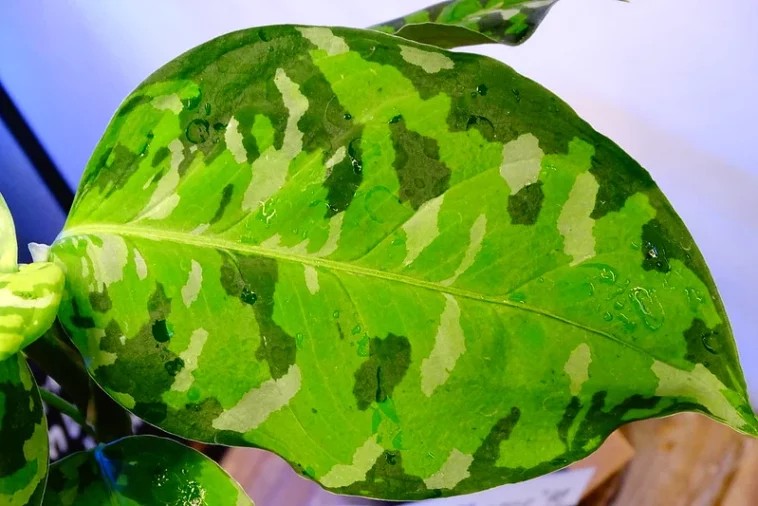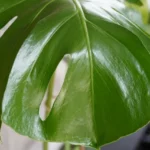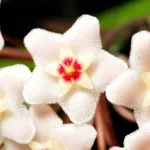Table of Contents
How to care for Agalonema Pictum Tricolor
Agalonema is a sub-tropical species of plants which grows in the rainforests of Nias island and Sumatra. This is a slow growing plant. It is often referred to as camouflage plant due to the pattern that it has.
These plants will grow to between thirty and fifty centimeters in height and they have a woody stem which can be up to two centimeters in width.
Agalonema Pictum Tricolor is part of the Aglaonema family and it features army type camouflage patterns on the leaves.
What does your Agalonema Pictum Tricolor require
Light Requirements
These plants need to be kept out of direct sunlight as this will burn the leaves. Aglaonema Pictum Tricolor tends to grow better in areas that have low light.
Temperature Requirements
Agalonema plants are best kept at temperatures between sixteen and twenty-nine degrees centigrade. They are a sub-tropical plant species therefore they need to be kept warm.
These plants do not do well in cold weathers and its best to keep them above ten degrees centigrade. During the winter months these plants need to be kept at temperatures between sixteen and eighteen degrees centigrade.
Soil Requirements
Agalonema Pictum Tricolor plants do better in rich soils that are well drained, and they tend to do better in peat type soils. Lightly acidic soils are best for these plants. These plants do not like compacted soil.
These plants need to have the correct mix of soils and its best to use a potting mix that is light and airy.
Humidity Requirements
Agalonema Pictum Tricolor thrives at levels of high humidity and between sixty-five and ninety per cent is best. This level of humidity can easily be provided by providing the plant with an enclosure such as a terrarium.
A good way to give the plant humid conditions indoors is to place the plant pot on a pebble tray that is covered with water.
How to Water
These plants need to be watered on a regular basis and avoid allowing the soil to dry out completely. Agalonema plants will thrive when they are kept moist and well hydrated.
Water these plants when the top two to four centimeters of soil feel dry to touch. Avoid overwatering as the soil will become water logged and this can lead to root damage.
The water requirements for these plants decreases during the winter months but do not allow them to dry out completely.
How to Fertilize
Agalonema Pictum Tricolor plants need to be fertilised every two weeks during the spring and summer months, which is the main growing season for the plant.
During the winter months the plant can be fertilised less and once every five to six weeks. It is common to give slow releasing fertiliser once a season and then fast acting fertilisers at other times during the season.
Extra Tips For Agalonema Pictum Tricolor
Pests and Diseases
There are no serious diseases or pests that affect these plants; however, it can still be affected by insects and bugs such as aphids, spider mites and mealybugs. One problem that can affect these plants is root rot if they are overwatered.
A good way to spot a disease or an attack of pests is to pay attention to the stem and foliage of the plant. If the leaves are looking pale or brown and are weak it can be a sign of abnormality.
When there is a problem with insects they can often be found rooting around in the soil or hiding on the underneath of a leaf.
Small spider type webs on the leaves is an indicator of mites on the plant. If this happens put the plant into isolation to protect the other plants. Trim the affected plant and prune the parts of the plant that have been affected by disease.
If the plant has a serious level of infestation, then an insecticide or fungicide spray can be used. It is also a good idea to repot the plant and keep it away from other plants until it starts to grow normally again.
Pruning
Aglaonema Pictum Tricolor plants do not need to be pruned very often. Mostly all that is needed is to remove the dried-up leaves, dead leaves and keep the plant clean. Wipe the plant and spray it with mist on a regular basis to keep it free from dust.
Whilst dusting the plant take time to look at the leaves as this will enable you to see if there are any signs of insect invasion or disease.
Propagation
Aglaonema Pictum Tricolor plants can be propagated by division or by stem cuttings.
These plants are better repotted every three to five years during the spring and summer months, as this will ensure that the plants do not become root bound.
From stem cutting
This is the most common method of propagation for this plant. The section of plant that you use should have several sections and leaves.
This method will increase the level of propagation success. When taking a cutting it is best to have at least five leaves on the cutting, however even a section with no leaves can be propagated.
- Locate the section of the plant that you want to use as a cutting.
- Ensure that the cutting has at least one node on it.
- Top cuttings that have a terminal bud will normally be the most successful.
- Pruning shears, a knife or scissors are the best tools to use when it comes to cutting the plant
- Before cutting the plant sanitise the tool that you are going to use. This can be done by holding under a lighter for a few seconds and then rubbing alcohol on it.
- Make a clean cut on the stem of the plant.
- Root the cutting in water and suitable soil.
- After between twenty-five and forty-five days the cutting will begin to develop roots and develop into a new plant.
Other methods that you can use for propagating your plant is to take root cuttings or use tissue cultures, which is known as micropropagation.
Propagation from seeds
To get seeds from these plants for propagation remove the seed when the plant blooms in summer and spring.
- Open the fruit and separate the pulp from the seed.
- Wash the seed thoroughly.
- Place the seeds into a sand and peat mixture, which should have equal amount of both peat and sand.
- Water the plant and keep it in optimum growing conditions.
Re-Potting Aglaonema Pictum Tricolor
These plants like to be root bound therefore they do not need to be re-potted on a regular basis.
Re-potting will be required every two to three years as the plant requires a bigger pot to continue growing. If the plant become infected with disease or insects, then it is a good idea to deal with the problem and repot the plant.
FAQ
How Do You Care for Aglaonema Pictum Tricolor?
Aglaonema Pictum Tricolor is a sub-tropical plant and is accustomed to high humidity and warm temperatures. Plants that are in these types of conditions will do better and be more successful.
Aglaonema Pictum Tricolor plants do not like drafts or cold temperatures. It is best to keep these plants away from drafts at doors and windows and keep them in areas that are warmers.
Is Aglaonema an Indoor Plant?
Aglaonema Pictum Tricolor is considered a greenhouse plant due to it thriving in areas of high humidity which are bright and warm. It can be kept as an indoor plant if the required conditions can be met.
How Do I Make My Aglaonema bushy?
The best wat to make the Aglaonema Pictum Tricolor bushy is to trim it back once it starts to grow and trim it back on a regular basis. Over time the plant will mature and will start to develop a bushy appearance.
Brown/Yellow Leaves
Sometimes these plants can develop pale coloured leaves and look transparent. When plants are transplanted into new substrate it is not uncommon for it to develop a transparent appearance especially when there is not a well-developed system for the roots.
To deal with this issue prune the leaves and water the plant on a regular basis and keep it in favourable conditions.
Drooping Leaves
Drooping leaves is a common problem in the Aglaonema Pictum Tricolor and this can be caused by inadequate or inappropriate supply of water or light.
The problem with supply of light or water causes the plant to become weak. Inadequate light for the plant causes the plant to become pale and it will wilt and become droopy.
Plants that have water logged soils can also become droopy and the leaves will go brown at the edges. If the plant is too dry, then the leaves will become dried out and crispy.
The best way to deal with these problems is investigate and find out what is causing the problem and then do what is required to fix it.



